
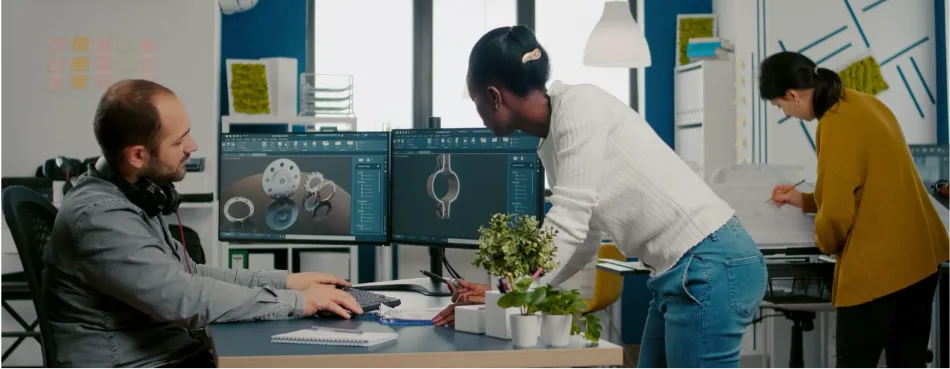
In today’s highly competitive market, the role of industrial design is more significant than ever. Industrial design is the professional practice of designing products millions worldwide use daily. It involves creating and developing concepts and specifications that optimize the function, value, and appearance of products and systems for the benefit of both the user and the manufacturer. This discipline combines art, business, and engineering to make functional, aesthetically pleasing, and economically viable products.
Industrial design services play a crucial role in modern product development. They bridge the gap between innovative ideas and market-ready products, ensuring that new concepts can be manufactured efficiently while meeting consumers’ needs and desires. High-quality industrial design services are essential for several reasons. First, they enhance the user experience by creating easy-to-use, safe, and enjoyable products. Good design considers ergonomics, usability, and accessibility, ensuring that many can use products.
Secondly, industrial design services contribute to a product’s economic success. Well-designed products stand out in the marketplace, attracting customers and generating higher sales. They often achieve better reviews and customer satisfaction, leading to brand loyalty and repeat business. Additionally, thoughtful design can reduce manufacturing costs by optimizing materials and processes, ultimately leading to better profit margins.
Furthermore, industrial design is integral to innovation. In a world where technology and consumer preferences constantly evolve, businesses must innovate continuously to stay relevant. Industrial design services help companies push the boundaries of what is possible, exploring new materials, technologies, and forms. This innovative edge can differentiate between leading the market and falling behind competitors.
Investing in high-quality industrial design services can lead to numerous benefits for businesses. It can enhance brand perception, as consumers often associate well-designed products with quality and reliability. It also helps differentiate products in a crowded market, providing a competitive advantage. Moreover, industrial design can address environmental concerns by promoting sustainability using eco-friendly materials and production methods.
The importance of industrial design services extends beyond individual products. They influence a company’s overall strategy, affecting how consumers, partners, and investors perceive it. A company known for its commitment to good design is often seen as innovative and forward-thinking, which can attract investment and collaboration opportunities.
This comprehensive guide will delve deeper into industrial design services, exploring the processes involved, their benefits, and future industry trends. Whether you are a startup looking to bring a new product to market or an established company aiming to refresh your product line, understanding the value of industrial design services is crucial. This guide will provide insights and practical advice on leveraging these services to achieve business success.
As we navigate the intricacies of industrial design, we will touch upon critical aspects such as the industrial design process, the role of advanced technologies, the importance of sustainability, and how to choose the right design partner. By the end of this guide, you will have a comprehensive understanding of industrial design services and how they can transform your product development efforts.
Industrial design services are not just about making products look good; they are about creating solutions that improve people’s lives, drive business success, and contribute to a sustainable future. By investing in these services, companies can ensure that their products not only meet but exceed the expectations of today’s discerning consumers.
In conclusion, the significance of industrial design in modern product development cannot be overstated. It is a vital component influencing product functionality, aesthetics, and economic viability. High-quality industrial design services are essential for business success, offering numerous benefits, from enhancing user experience to driving innovation and sustainability. As we continue exploring this field, remember that investing in good design is not just a cost but a strategic investment in your business’s future success.
Definition and Scope of Industrial Design Services

Industrial design services encompass the professional practice of designing products that millions use worldwide. These services involve creating and developing concepts and specifications that optimize the function, value, and appearance of products and systems for the benefit of both the user and the manufacturer. The scope of industrial design services is broad, covering various stages of product development from initial concept generation to the final manufacturing stage. Industrial designers work on multiple products, including consumer electronics, medical devices, automotive components, household appliances, and more.
Industrial design is a multidisciplinary field that combines elements of engineering, aesthetics, and user experience. It requires a deep understanding of materials, manufacturing processes, human factors, and market trends. The goal is to create products that meet functional requirements and provide a positive user experience and aesthetic appeal.

1. Usability:
Usability is a critical component of industrial design. It refers to the ease with which a product can be used by its intended users. Good design considers ergonomics, ensuring that products are comfortable and easy to interact with. Usability also involves simplifying complex functions and making the product intuitive so users can achieve their goals with minimal effort and error.
2. Aesthetics
Aesthetics play a significant role in a product’s appeal. Industrial designers strive to create visually pleasing products that align with the brand’s identity. The aesthetic aspect of design involves selecting appropriate colors, shapes, textures and finishes that enhance the product’s overall look and feel. A well-designed product with a solid aesthetic appeal can differentiate a brand in a crowded market and attract more customers.
3. Functionality:
Functionality is at the core of industrial design. It involves ensuring that the product performs its intended functions effectively and reliably. Designers must understand the technical requirements and constraints of the product to create practical and innovative solutions. Functional design also includes considerations for ease of maintenance, durability, and safety, ensuring that the product meets the users’ needs over its lifecycle.
4. Manufacturability:
Manufacturability refers to the ease with which a product can be manufactured at scale. Industrial designers must work closely with engineers and manufacturers to ensure their designs can be produced efficiently and cost-effectively. This involves selecting appropriate materials, designing for assembly, and considering the limitations of manufacturing processes. A difficult or expensive design can lead to increased production costs and delays, impacting the product’s success in the market.
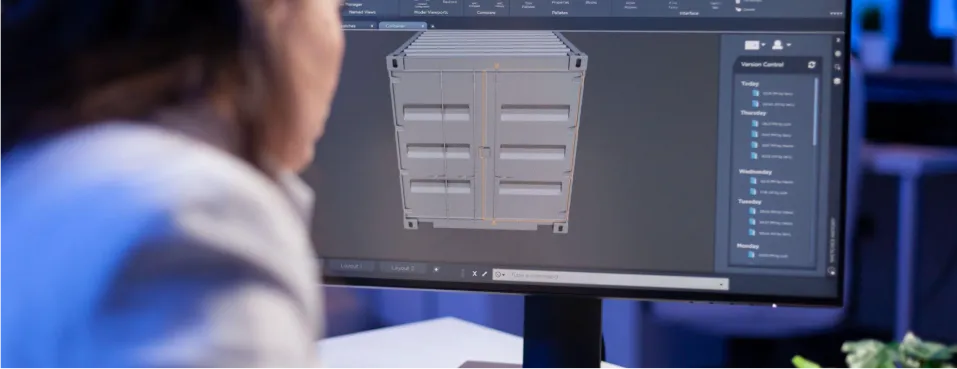
Integrating industrial design into the early stages of product development is crucial for several reasons:
1. Enhanced Innovation:
Early involvement of industrial designers fosters a culture of innovation. Designers bring a fresh perspective and creative problem-solving skills that can lead to breakthrough product ideas. By collaborating with engineers and other stakeholders from the beginning, designers can explore new materials, technologies, and design approaches that push the boundaries of what is possible.
2. Cost Efficiency:
Addressing design considerations early in development can lead to significant cost savings. By identifying potential manufacturing challenges and usability issues upfront, companies can avoid costly redesigns and modifications later in the process. Early design integration also allows for better planning of materials and production methods, optimizing costs and reducing time to market.
3. User-Centered Design:
Integrating industrial design early ensures that user needs and preferences are considered from the outset. This user-centered approach makes products more likely to meet market demands and achieve higher customer satisfaction. Early user testing and feedback can inform design decisions, resulting in intuitive, functional, and enjoyable products.
4. Brand Consistency:
Early involvement of industrial designers helps maintain brand consistency across product lines. Designers can ensure that new products align with the company’s brand identity and design language, creating a cohesive product portfolio. Consistent design reinforces brand recognition and trust, enhancing the company’s market position.
5. Regulatory Compliance: Industrial designers can help navigate regulatory requirements and standards that impact product design. By considering these factors early, companies can ensure compliance and avoid delays in bringing products to market. Designers can also incorporate safety features and accessibility standards, creating products that meet the highest quality and safety benchmarks.
6. Sustainability: Early integration of industrial design allows for incorporating sustainable practices in product development. Designers can select eco-friendly materials, design for disassembly and recycling, and optimize production processes to minimize environmental impact. Sustainable design benefits the planet and appeals to environmentally conscious consumers, enhancing the product’s marketability.
Industrial design services are a vital component of successful product development. They encompass various activities to create functional, aesthetically pleasing, user-friendly, and manufacturable products. By integrating industrial design into the early stages of product development, companies can foster innovation, achieve cost efficiencies, and ensure that their products meet user needs and market demands. High-quality industrial design services are essential for businesses looking to differentiate themselves in a competitive market and achieve long-term success.

The industrial design process is a structured approach to product development that ensures the creation of functional, aesthetically pleasing, and manufacturable products. This process involves several stages, each with specific tasks and objectives. Here, we outline the critical stages of the industrial design process: Research and Analysis, Concept Development, Design Refinement, and Final Design and Production.
The first step in the industrial design process is thorough research and analysis. This involves understanding the market landscape and identifying user needs. Market research helps gather insights about the target audience, including their preferences, behaviors, and pain points. It involves surveys, interviews, focus groups, and analysis of existing data to build a comprehensive picture of the user requirements.
User needs assessment is crucial for designing products that meet end-user expectations and solve their problems. By engaging directly with potential users, designers can gather valuable feedback that informs the design process. This step ensures the final product is user-centered and aligns with market demands.
In addition to understanding user needs, it is essential to analyze the competitive landscape. Competitive analysis involves studying existing products in the market, identifying their strengths and weaknesses, and understanding competitors’ strategies. This helps identify gaps and opportunities for differentiation.
Technology scouting is another essential aspect of this stage. It involves researching new and emerging technologies that can be integrated into the product. By staying updated with technological advancements, designers can incorporate innovative features and functionalities that enhance the product’s value proposition.
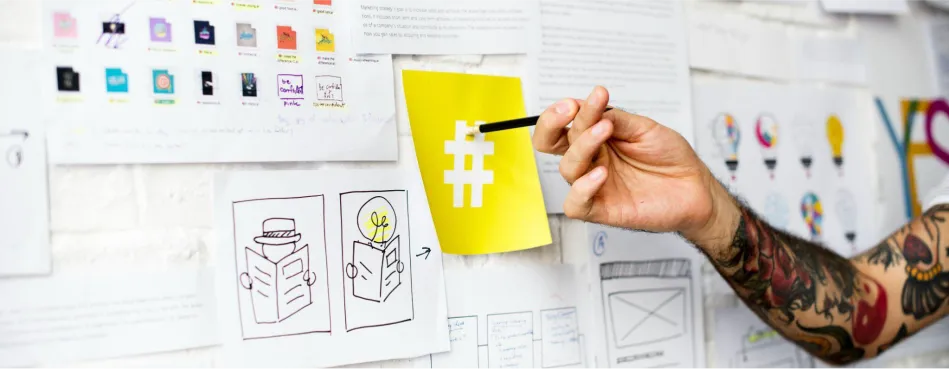
Once the research and analysis phase is complete, the next step is concept development. This stage involves brainstorming sessions, during which designers generate various ideas. The goal is to explore multiple possibilities and approaches to address the identified user needs and market opportunities.
Initial sketches are created during brainstorming sessions to visualize the ideas. These rough sketches help communicate the design concepts and serve as the foundation for further development. The focus is on creativity and innovation, emphasizing generating multiple design solutions.
Mood boards and concept art are essential tools in the concept development phase. Mood boards are collages of images, colors, materials, and textures that convey the overall look and feel of the product. They help establish a visual direction and ensure the design aligns with the desired aesthetic.
Concept art involves creating detailed illustrations and renderings of the design concepts. These visual representations provide a clearer picture of the final product’s appearance and function. Concept art refines ideas and informs decisions about the design direction.

After the initial concepts are developed, the design refinement stage begins. This involves creating detailed 3D models using computer-aided design (CAD) software. 3D modeling allows designers to explore the product’s form, structure, and dimensions in a virtual environment. It enables precise visualization and helps identify potential design issues early in the process.
CAD design also facilitates collaboration with engineers and manufacturers. The detailed digital models provide the necessary technical specifications for prototyping and production, ensuring the design is feasible and can be manufactured efficiently.
Prototyping is a critical step in the design refinement phase. Physical prototypes are created to test the design’s functionality, ergonomics, and usability. Depending on the complexity of the product, these prototypes can range from simple mock-ups to fully functional models.
Iterative testing involves evaluating the prototypes, gathering feedback, and making necessary adjustments. This testing and refinement cycle helps identify and address issues before final production. It ensures the product meets the desired performance, quality, and user satisfaction standards.
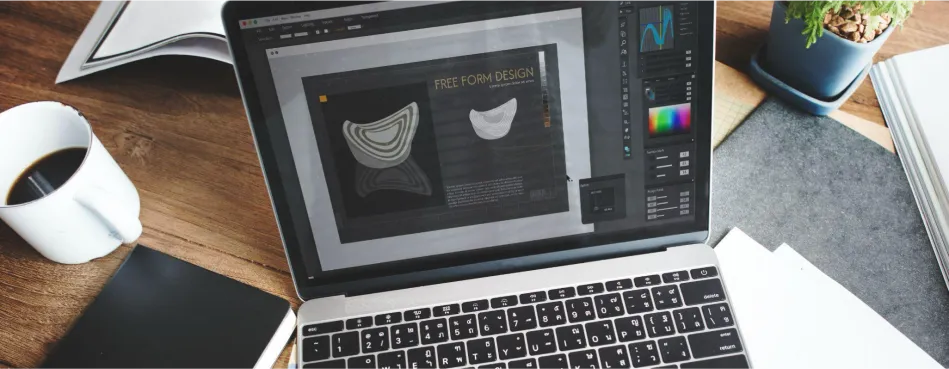
The final design stage begins once the design is refined and validated through prototyping and testing. This involves preparing the design for manufacturing by creating detailed engineering drawings, assembly instructions, and bill of materials. The goal is to ensure the product can be manufactured at scale, efficiently, and cost-effectively.
Collaboration with manufacturers is crucial during this stage. Designers work closely with production teams to ensure the design can be produced using available manufacturing processes and technologies. They address potential challenges and make necessary adjustments to optimize the production design.
Quality control and compliance testing ensure the final product meets regulatory standards and quality benchmarks. This involves rigorous testing of the product’s performance, durability, safety, and reliability. Compliance testing ensures the product adheres to industry standards and regulations, such as safety certifications and environmental guidelines.
Quality control processes are implemented throughout the manufacturing phase to monitor and maintain the consistency and quality of the product. This includes inspecting materials, components, and finished products to identify and rectify defects.
The industrial design process is a systematic approach encompassing research and analysis, concept development, design refinement, and final design and production. Each stage is crucial in creating functional, aesthetically pleasing, and manufacturable products. By following this process, designers can ensure that the final product meets user needs, aligns with market demands, and achieves business success. Integrating industrial design into the early stages of product development is essential for fostering innovation, achieving cost efficiencies, and delivering high-quality products that stand out in the competitive market.
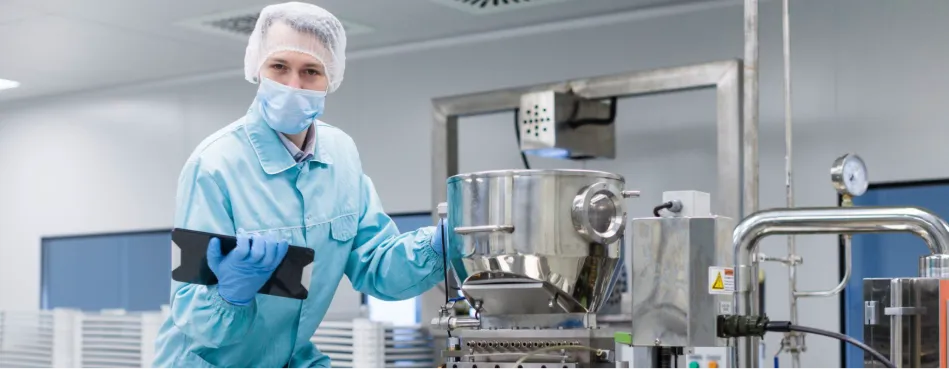
High-quality industrial design services play a pivotal role in a product’s success. These services offer numerous benefits, including improved product aesthetics and user experience, enhanced functionality and performance, increased market competitiveness and brand value, and cost savings through efficient design and manufacturing processes. Let’s delve deeper into each of these benefits.
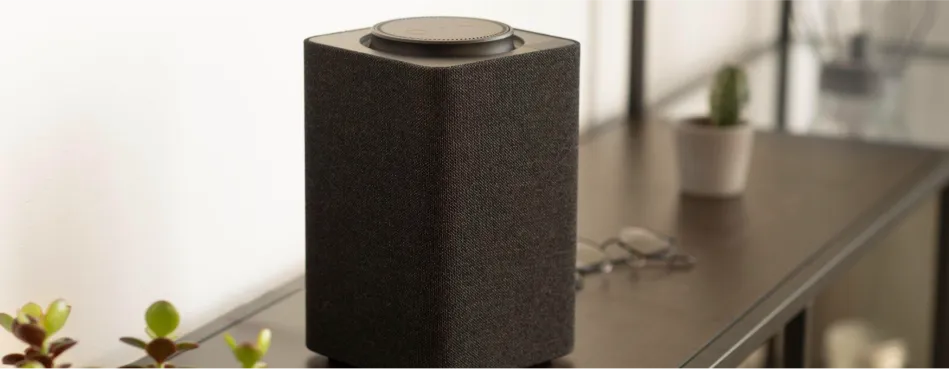
A product’s aesthetic appeal is one of the first things consumers notice. High-quality industrial design services ensure that products are visually appealing, which can significantly influence consumer buying decisions. Designers focus on creating functional and aesthetically pleasing products, considering color, shape, texture, and overall visual harmony. A well-designed product stands out on the shelf, attracts attention, and creates a positive first impression.
Beyond looks, product design’s user experience (UX) is paramount. High-quality industrial design services prioritize usability, ensuring that products are intuitive and easy to use. This involves ergonomic design, which makes products comfortable to hold and operate, and user-friendly interfaces that simplify interaction. A positive user experience leads to higher customer satisfaction, fewer returns, and increased loyalty. For instance, a kitchen appliance with user-centric features such as easy-to-read controls, comfortable grips, and smooth operation can significantly enhance the user experience, making daily tasks more enjoyable and efficient.

The primary function of any product is its ability to perform its intended purpose effectively. High-quality industrial design services enhance functionality by integrating user needs and technical requirements into the design process. This involves meticulous planning and testing to ensure the product performs reliably under various conditions. For example, a medical device designed to monitor vital signs must function accurately and consistently, providing critical data that healthcare providers rely on for patient care.
Performance is closely linked to functionality. High-quality design services ensure that products work and excel in their performance. This includes optimizing the product for durability, efficiency, and reliability. By conducting rigorous testing and validation, designers can identify potential issues and make necessary adjustments before the product reaches the market. For example, an industrial machine designed to operate continuously in a manufacturing environment must be robust and efficient, minimizing downtime and maintenance costs.

In a competitive market, standing out from the competition is crucial. High-quality industrial design services help companies create unique products that differentiate them from competitors. This differentiation can be based on superior design, innovative features, or exceptional user experience. A well-designed product that offers clear advantages over competing products can capture a larger market share and build a loyal customer base. For example, a smartphone with a sleek design, advanced features, and a user-friendly interface can distinguish itself in a crowded market, attracting tech-savvy consumers looking for the latest innovations.
A strong brand is built on a foundation of high-quality products. Industrial design services contribute to brand value by ensuring that every product reflects the brand’s commitment to excellence. Consistent design language across product lines reinforces brand identity and creates a cohesive image that consumers recognize and trust. High-quality design communicates reliability, innovation, and attention to detail, enhancing the brand’s overall perception. For instance, a luxury car brand known for its meticulously designed vehicles and premium materials reinforces its brand value through consistent design excellence, appealing to discerning customers who value quality and sophistication.

High-quality industrial design services can lead to significant cost savings by optimizing the design for manufacturability. This involves selecting materials and production methods that reduce waste, lower production costs, and streamline assembly processes. Efficient design also minimizes the need for costly design changes and rework by addressing potential issues early in development. For example, a consumer electronics company that designs products with modular components can simplify assembly, reduce production costs, and facilitate more straightforward repairs, ultimately saving money and enhancing product longevity.
Effective industrial design takes into account the capabilities and limitations of manufacturing processes. By collaborating closely with manufacturers, designers can ensure that the product design aligns with production capabilities, reducing the risk of errors and delays. This collaboration results in a smoother transition from design to production, with fewer disruptions and lower costs. Additionally, designing for manufacturability can lead to more efficient use of materials and resources, reducing production costs. For example, a furniture manufacturer that designs products with standard dimensions and materials can streamline production, minimize material waste, and lower costs while still delivering high-quality, attractive products to customers.
High-quality industrial design services offer many benefits that extend beyond the aesthetics of a product. They enhance the user experience, improve functionality and performance, increase market competitiveness and brand value, and drive cost savings through efficient design and manufacturing processes. Investing in professional industrial design services is a strategic decision that can lead to developing superior products, stronger brands, and, ultimately, more tremendous business success. By prioritizing high-quality design, companies can create products that meet and exceed customer expectations, fostering long-term loyalty and growth.
Industrial design is crucial in transforming innovative ideas into functional and aesthetically pleasing products. Successful industrial design projects across various industries, such as healthcare devices, consumer electronics, and automotive design, demonstrate how effective design can significantly improve usability, enhance user experience, and drive market appeal. Here, we explore three case studies showcasing the impact of high-quality industrial design services.
Case Study: Medtronic MiniMed 670G Insulin Pump

Medtronic, a leader in medical technology, developed the MiniMed 670G insulin pump, a revolutionary device for managing Type 1 diabetes. This insulin pump uses advanced algorithms to automatically adjust insulin delivery based on continuous glucose monitoring, providing a more accurate and convenient way for patients to manage their condition.
Usability: The MiniMed 670 G’s design prioritizes user-friendliness, making it easier for patients to manage their diabetes. The device features an intuitive interface with transparent, easy-to-read displays and straightforward navigation. This ensures that users can quickly access and understand their glucose data and adjust settings.
Patient Comfort: The pump is designed to be discreet and comfortable, with a compact form factor that fits easily under clothing. This encourages continuous use, which is crucial for effective diabetes management.
Improved Patient Outcomes: The MiniMed 670 G helps patients maintain more stable glucose levels by automating insulin delivery and reducing the need for manual adjustments. This leads to better health outcomes, reducing the risk of complications associated with diabetes.
The MiniMed 670G has been widely praised for its innovative design and effectiveness in improving the quality of life for people with Type 1 diabetes. It has set a new standard for insulin pumps, demonstrating how high-quality industrial design can enhance usability and improve patient outcomes.
Case Study: Apple AirPods

Apple’s AirPods have become an iconic product in the realm of consumer electronics, combining cutting-edge technology with sleek, minimalist design. These wireless earbuds offer seamless connectivity, high-quality audio, and an intuitive user experience.
Aesthetics: The design of the AirPods is a testament to Apple’s commitment to simplicity and elegance. The clean, white design with smooth curves and no visible buttons creates a modern, sophisticated look that appeals to many consumers.
Ergonomics: The AirPods are designed to fit comfortably in the ear, with a shape that suits various ear sizes and provides a secure fit. This ergonomic design ensures long-lasting comfort, even during extended use.
User Experience: The seamless integration with Apple’s ecosystem enhances the user experience. Features like automatic pairing, touch controls, and easy access to Siri make the AirPods incredibly user-friendly. The compact charging case adds convenience, allowing users to recharge the earbuds on the go.
The AirPods have been a commercial success, capturing a significant share of the wireless earbud market. Their design has set a benchmark for other brands, influencing the design of countless other wireless earbuds. The combination of aesthetic appeal, ergonomic comfort, and user-friendly features has made AirPods a favorite among consumers, highlighting the importance of industrial design in consumer electronics.
Case Study: Tesla Model 3
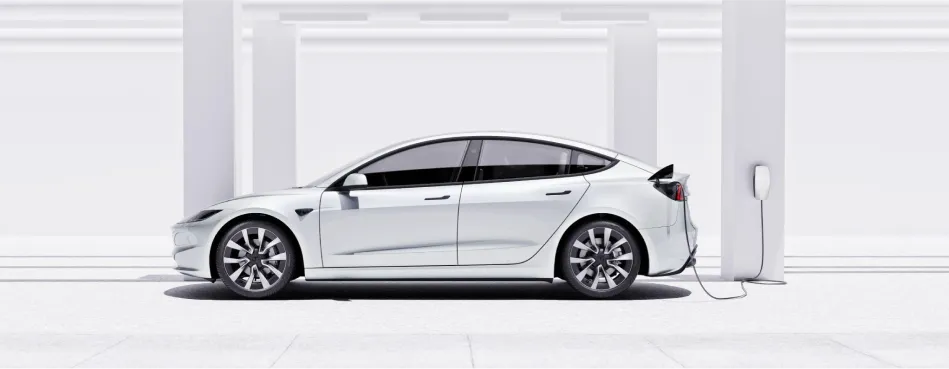
The Tesla Model 3 is a groundbreaking electric vehicle (EV) that combines performance, sustainability, and cutting-edge design. As a more affordable option in Tesla’s lineup, the Model 3 aims to bring electric vehicles to a broader audience without compromising quality or innovation.
Aesthetics: The Model 3’s sleek and modern design has clean lines and a minimalist interior. The absence of a traditional front grille and the presence of a large touchscreen display in the center console contribute to its futuristic look.
Safety: Safety is a top priority in the design of the Model 3. It features a robust and rigid structure, with strategically placed crumple zones and advanced driver assistance systems (ADAS) such as Autopilot. These safety features have earned the Model 3 top ratings from various safety organizations.
Ergonomics: The interior of the Model 3 is designed for maximum comfort and convenience. With its centrally located touchscreen, the minimalist dashboard reduces clutter and makes it easy for drivers to access controls. The spacious cabin and supportive seats enhance comfort for both drivers and passengers.
The Tesla Model 3 has been a game-changer in the automotive industry, demonstrating the potential of electric vehicles to offer both performance and style. Its design has influenced future automotive design, with many manufacturers adopting similar minimalist and technology-driven approaches. The Model 3’s success underscores the importance of industrial design in creating vehicles that are not only safe and functional but also visually appealing and enjoyable to drive.
These case studies illustrate the profound impact of high-quality industrial design services across various industries. In healthcare, improved usability and patient outcomes demonstrate the importance of user-centered design. In consumer electronics, enhanced user experience and market appeal highlight the role of aesthetics and ergonomics. In automotive design, safety, ergonomics, and aesthetics innovations showcase the potential for industrial design to drive significant advancements.
Investing in high-quality industrial design services is essential for companies looking to create products that stand out in the market, meet user needs, and achieve commercial success. By prioritizing design excellence, businesses can develop products that perform well and resonate with consumers, driving long-term growth and brand loyalty. These case studies serve as a testament to the transformative power of industrial design and its critical role in shaping the future of product development.
Selecting the right industrial design partner is crucial for the success of your product development project. The right partner can bring your vision to life, ensuring your product is functional, aesthetically pleasing, manufacturable, and market-ready. Here are the critical criteria for selecting a design firm, essential questions to ask potential partners, and the benefits of working with experienced professionals.

Look for a firm with a proven track record in your industry. Experience in similar projects can provide valuable insights and ensure the design firm understands your product’s specific challenges and requirements.
Evaluate the firm’s expertise in various aspects of industrial design, such as usability, ergonomics, materials, manufacturing processes, and sustainability. A well-rounded team with diverse skills can address all facets of product development.

Choosing the right industrial design partner is a critical decision that can significantly impact the success of your product development project. By considering essential criteria such as experience, portfolio, client testimonials, process, and innovation and asking the right questions, you can identify a design firm that aligns with your vision and goals. Working with experienced professionals offers numerous benefits, including expertise, quality, efficiency, collaboration, innovation, market understanding, risk mitigation, and sustainability. Investing in the right industrial design partner ensures your product is well-designed, functional, market-ready, and aligned with consumer expectations.

Industrial design services transform product development, shaping functional, aesthetically pleasing, user-friendly, and manufacturable products. The comprehensive industrial design process involves rigorous research and analysis, innovative concept development, meticulous design refinement, and careful preparation for manufacturing. These stages ensure the final product meets high performance, quality, and consumer appeal standards. The benefits of industrial design services are manifold, encompassing improved product aesthetics, enhanced functionality, increased market competitiveness, and significant cost savings through efficient design and manufacturing processes.
Investing in high-quality industrial design services is a strategic decision that can propel businesses to new heights of success. In today’s competitive market, where consumer expectations are continually evolving, the importance of exceptional design cannot be overstated. High-quality industrial design services can help businesses create outstanding products, capture consumer interest, and foster brand loyalty. These services ensure that products are visually appealing and deliver superior user experiences and performance. By prioritizing design excellence, businesses can drive innovation, reduce time-to-market, and achieve long-term growth and profitability.
The significance of industrial design services lies in their ability to integrate creativity, technical expertise, and market insight into product development. These services bridge the gap between innovative ideas and market-ready products, ensuring that new concepts can be manufactured efficiently while meeting the needs and desires of consumers. Industrial design services contribute to the economic success of a product by enhancing its market appeal and reducing production costs through optimized design and manufacturing processes. Furthermore, they play a crucial role in sustainability, enabling the development of eco-friendly products that align with environmental goals.
High-quality industrial design services focus on creating products that provide excellent user experiences. This involves ergonomic design, intuitive interfaces, and user-centric features that make products easy to use and enjoyable. A product that delivers a positive user experience is more likely to succeed in the market, garnering positive reviews and customer satisfaction. Additionally, the aesthetic appeal of a well-designed product can significantly enhance its marketability. Consumers are drawn to products that look good and feel good to use, and a solid visual design can differentiate a product in a crowded market.
Case studies from various industries, such as healthcare devices, consumer electronics, and automotive design, illustrate the profound impact of high-quality industrial design services. For example, Medtronic’s MiniMed 670G insulin pump demonstrates how user-centric design can improve patient outcomes and enhance usability. Apple’s AirPods showcase the importance of aesthetics and ergonomics in creating a product that has become a market leader in consumer electronics. Tesla’s Model 3 exemplifies how innovative design can drive advancements in safety, ergonomics, and aesthetics in the automotive industry. These examples highlight the transformative power of industrial design services in creating products that excel in functionality, user experience, and market appeal.
Sustainability is a critical consideration in modern industrial design. High-quality industrial design services incorporate eco-friendly practices, such as using sustainable materials, improving energy efficiency, designing for longevity, minimizing waste, and conducting lifecycle assessments. Companies like Patagonia, IKEA, Apple, Unilever, and Tesla lead the way in sustainable design, demonstrating that creating high-quality, innovative products while minimizing environmental impact is possible. By adopting sustainable design practices, businesses can contribute to a healthier planet, meet consumer demand for eco-friendly products, and build a robust and responsible brand.
Selecting the right industrial design partner is essential for successful product development. Critical criteria for choosing a design firm include experience and expertise, a strong portfolio and case studies, positive client testimonials and references, a structured process and methodology, and a commitment to innovation and technology. Asking potential partners about their experience, process, tools, sustainability practices, and references can help businesses make informed decisions. Working with experienced professionals offers numerous benefits, including expertise, quality, efficiency, collaboration, innovation, market understanding, risk mitigation, and a focus on sustainability.
Investing in high-quality industrial design services is not just a cost but a strategic investment in the future success of your business. By prioritizing design excellence, companies can develop products that meet and exceed consumer expectations, foster brand loyalty, and achieve long-term growth. The transformative power of industrial design services lies in their ability to create functional, aesthetically pleasing, user-friendly, and manufacturable products. As the market continues to evolve, the importance of exceptional design will only grow. Businesses that embrace high-quality industrial design services will be well-positioned to lead in their industries, drive innovation, and build a sustainable and prosperous future.
By harnessing the full potential of industrial design services, businesses can turn their visions into reality, creating products that succeed in the market and positively impact the world. Whether developing a new product or seeking to improve an existing one, investing in high-quality industrial design services is crucial to achieving your business goals and realizing your full potential in the competitive marketplace.